I've recently been transliterating some old schematics for a friend of mine (Basically taking paper schematics from the 40s and drawing them in a modern EDA package) and have come across some very interesting/old electronics terms that are not in common parlance anymore.
Since I didn't know what they meant, I had to ask.
Therefore, I figure having a list of interesting/esoteric/old electronics terms would be useful, so here we are.
(Note: Try to stick to terms which were/are at least somewhat common, not things which you or someone you know thought up)
Note:
Please provide a short description for what the thing you are describing is, and a little historical info would be a positive. Just listing an Acronym or the name of an oddball instrument is not helpful if someone has encountered one of the things you are defining, and is trying to determine what it is/how it works.

